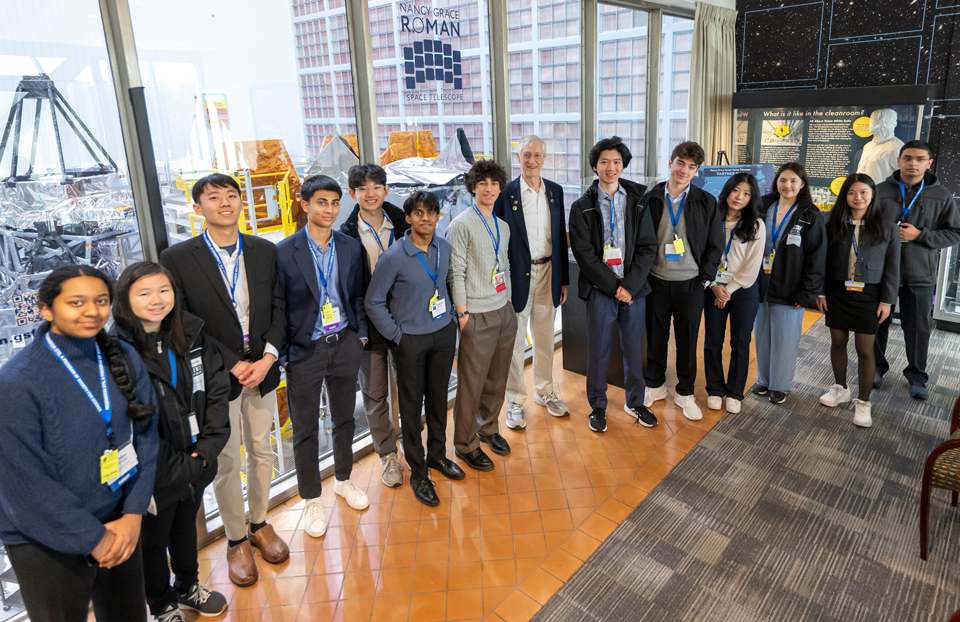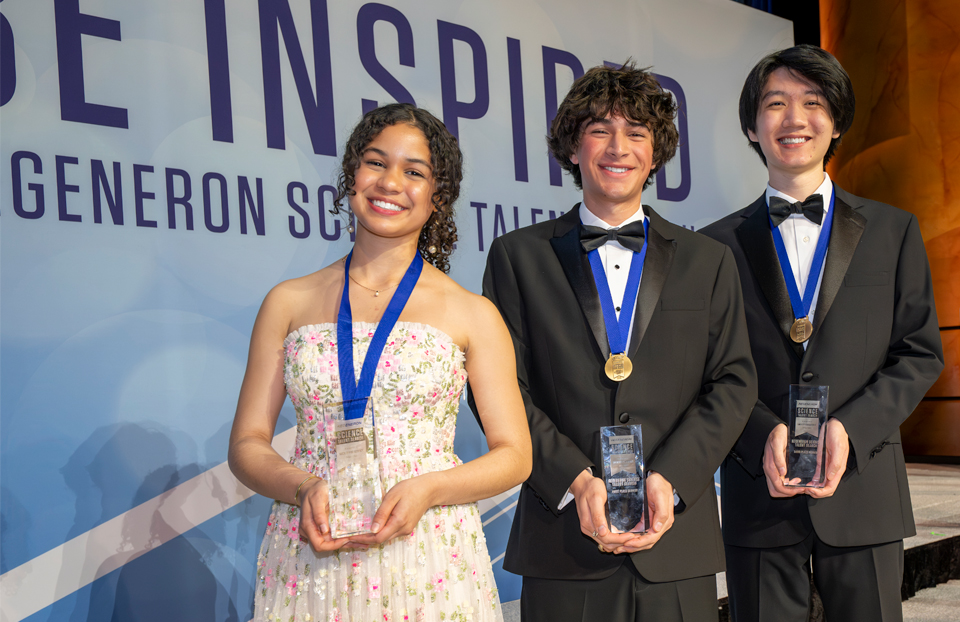Insights from 7 Regeneron STS finalists at the Public Exhibition of Projects
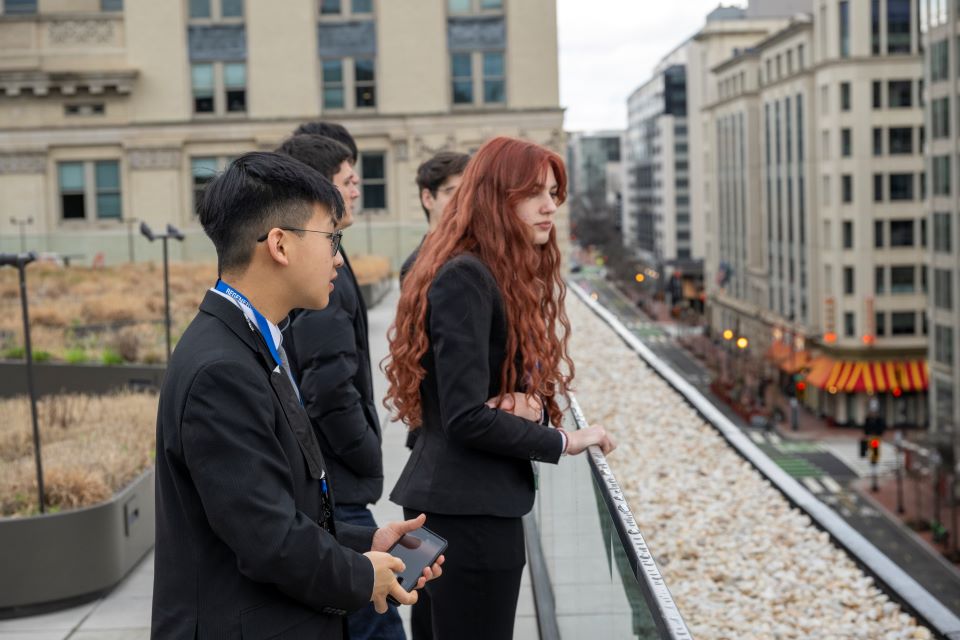
Yesterday afternoon, on March 10, the nation’s top 40 young scientists climbed to the fifth floor of the Martin Luther King Jr. Memorial Library in Washington D.C. to showcase their independent research projects and share their STEM passions with the public. This was an opportunity for the Regeneron Science Talent Search finalists to talk about what they know best: their own research.
Approximately 250 attendees convened to hear from this year’s talented group, congratulating them on their impressive achievements. We took some time to engage with seven students at the exhibition to gain insights into their current experiences and discover what they are particularly enthusiastic about as they look ahead.
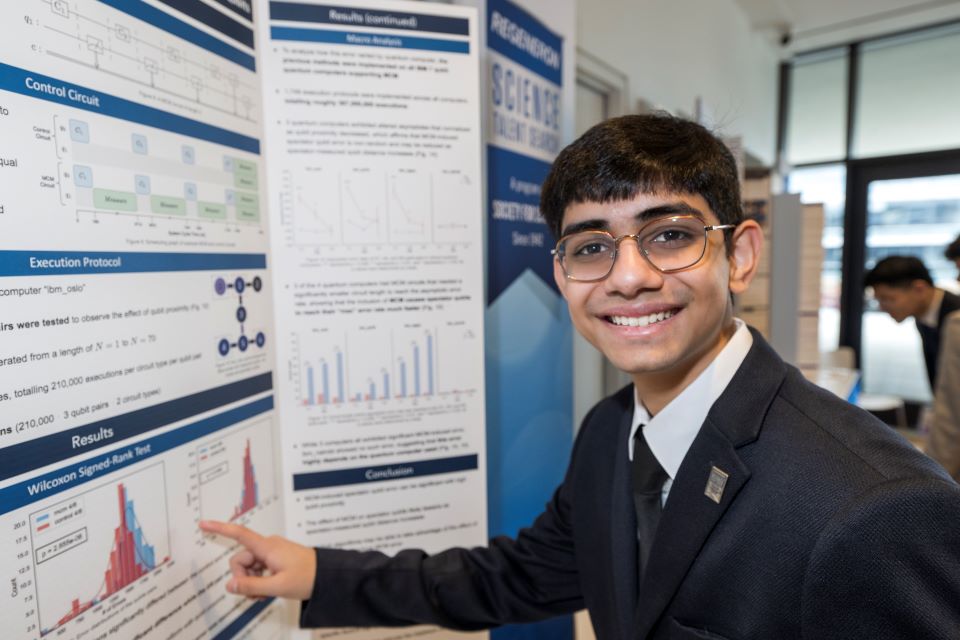
Harshil Avlani
BASIS Chandler (Chandler, Arizona)
Project title: Analyzing the Effect of Mid-Circuit Measurement (MCM) on Spectator Qubits
Harshil Avlani studied the arrangement of qubits (units of information) located in quantum computers, hoping to reduce significant errors. He hopes his research could one day lead to performance improvement in quantum computing systems. What will Harshil be doing once he gets home from STS? He says, “I’m probably moving on to something new. I’ve started a new project on the intersection between quantum computing and transformers, the machine learning model. So, I’ll probably be doing a lot more research into that.”
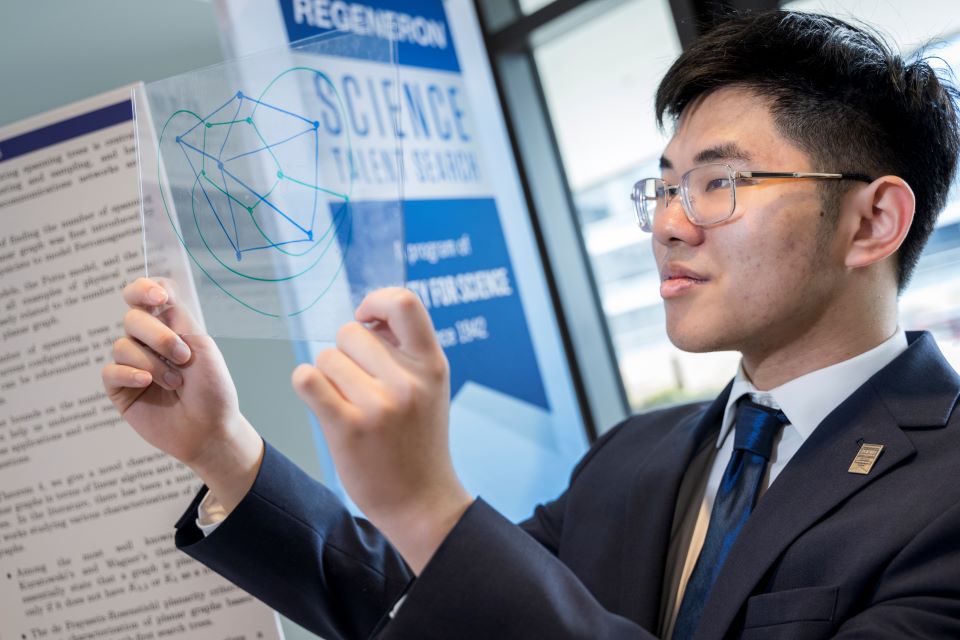
Alan Bu
Phillips Exeter Academy (Exeter, New Hampshire)
Project title: On the Maximum Number of Spanning Trees in a Planar Graph With a Fixed Number of Edges: A Linear-Algebraic Connection
Alan Bu’s math project sheds light on the structure of planar graphs by giving precise limits on how many spanning trees a planar graph can have. A spanning tree is the connecting point of vertices in a graph. What’s his favorite part of STS? “I’ve met a lot of amazing people here and I’ve learned a lot of things from them, and I want to grow as a person as well from this experience. I’ve also met a lot of people here from tons of different places, and I’m looking forward to potentially seeing them again in college, and maybe even doing research together in the future.”
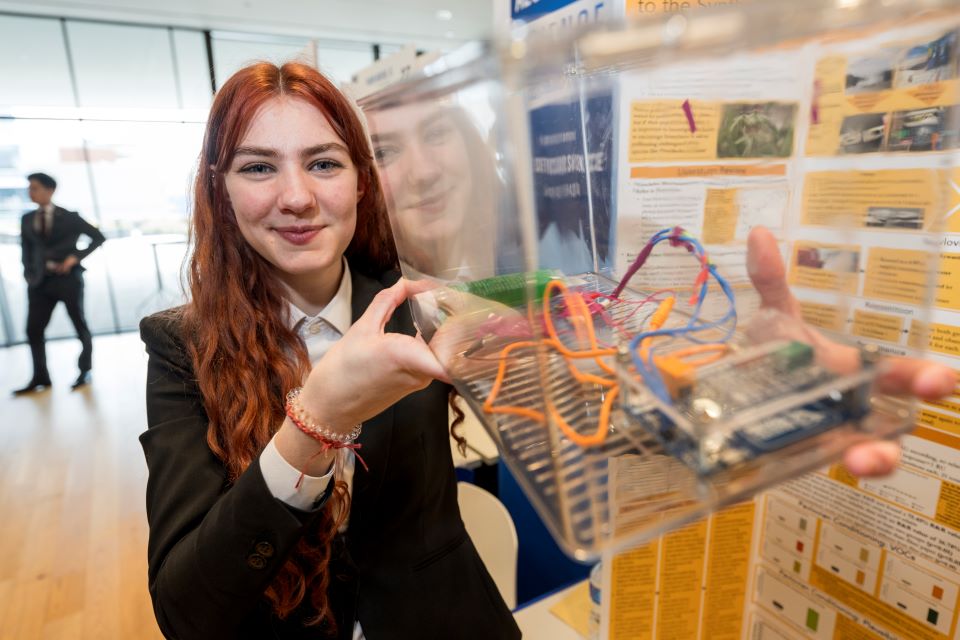
Ella Pilacek
Oviedo High School (Oviedo, Florida)
Project title: Promoting Attraction of Apis mellifera to the Synthetic Scent of the Endangered Orchid Prosthechea cochleata Using Pavlovian Conditioning and Direct Feeding Paradigms for Conservation
Ella researched ways to teach non-native honeybees how to pollinate an endangered native orchid species, potentially enhancing pollination rates and increasing the likelihood of species survival. What’s Ella most excited to bring home? She says, “The connections that I’ve made with other people from a networking perspective. If I have physics question, there’s someone who just did an astrophysics project that I can talk to, who I can call and do homework with. Or even beyond that, the interactions with judges. I am excited for the feedback that I’m going to get from judges, hopefully at some point I can go and talk to them to ask, ‘Hey, what should I change?’ or ‘What do you think was a weak point?’ because obviously they can’t tell us during judging, but it would be helpful to get this feedback later.”
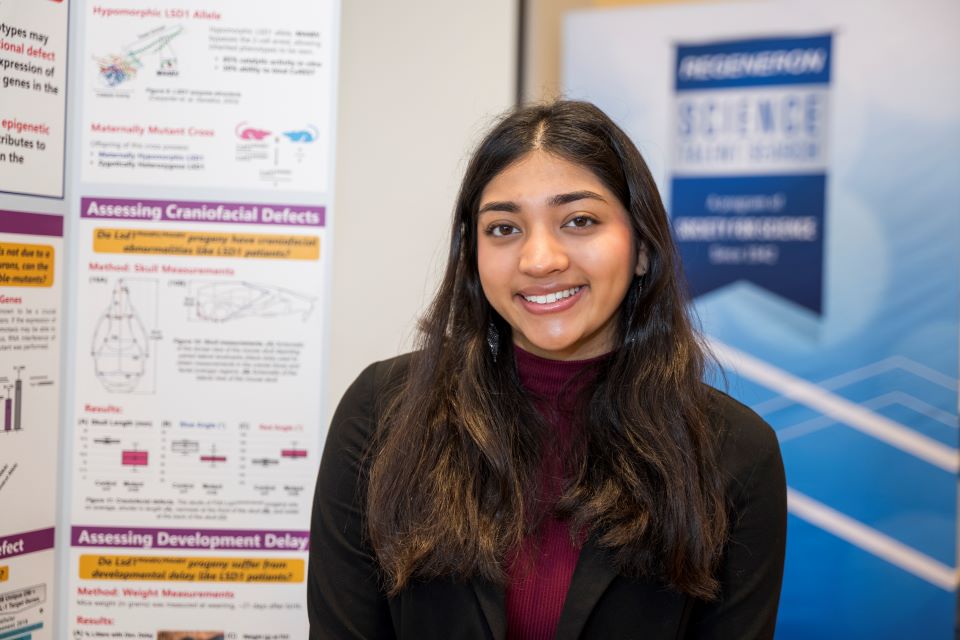
Rhea Rastogi
Loveless Academic Magnet Program High School (Montgomery, Alabama)
Project title: Understanding How the Maternal Epigenetic Reprogramming Function of LSD1 Contributes to Inherited Developmental Disease
Rhea Rastogi explored histone methylation and found that errors in the histone regulation in the mother’s oocytes can lead to irregular gene expression patterns in offspring that give rise to behavioral defects. Her findings could provide insight into the epigenetic pathways of human patients suffering from Kabuki-like Syndrome. What’s she most excited to bring home from the competition? She says, “All the female finalists have built such a close bond. We’ve only seen each other for three days now, but there’s so much we relate to in terms of how we feel—not just in this competition but in academics and our lives. I’ll also be taking home the fact that I am now free to dream about anything I want. This experience is sort of a trampoline into my future career. Now I don’t have to doubt myself constantly; I know that I can do it. I just have to believe in myself.”
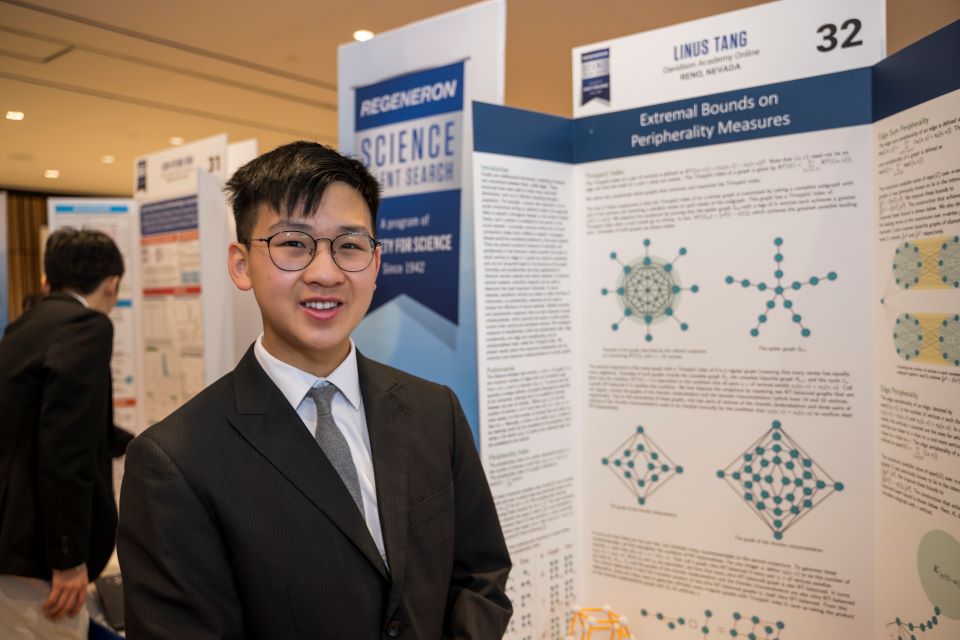
Linus Tang
Davidson Academy Online (Reno, Nevada)
Project title: Extremal Bounds on Peripherality Measures
Linus Tang researched centrality and peripherality measures in graph theory for his math project. Applications could include tracing disease-spread and understanding systems of chemical interactions. What’s his favorite part of STS so far? “Right now, I’m glad to have met the 39 other finalists. They are awesome people, and having met them is truly the most valuable part of this experience. I’m also happy that the Regeneron Science Talent Search has given me this opportunity to share my research with others.”
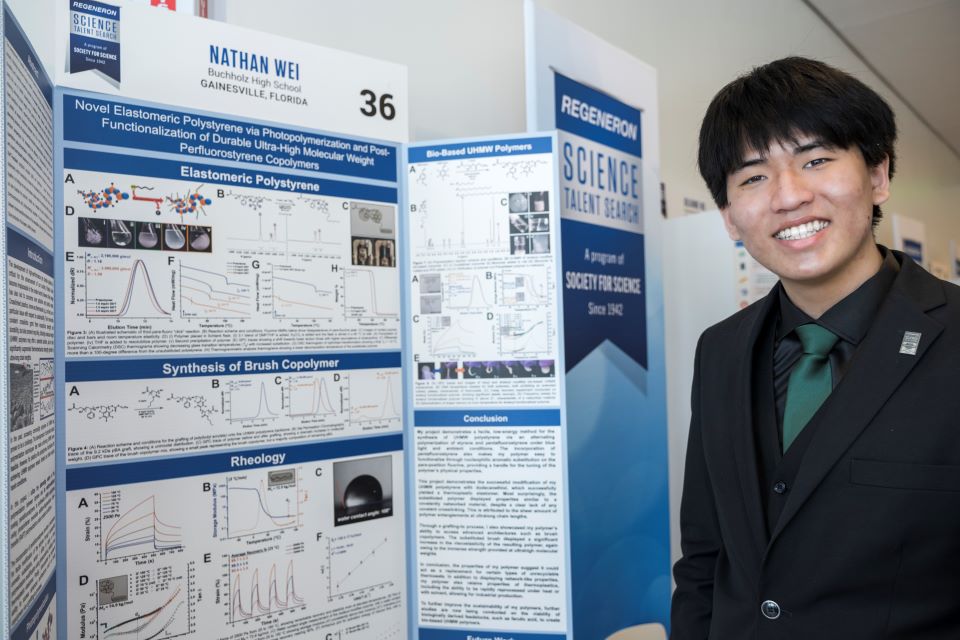
Nathan Wei
Buchholz High School (Gainesville, Florida)
Project title: Novel Elastomeric Polystyrene Via Photopolymerization and Post-Functionalization of Durable Ultra-High Molecular Weight Perfluorostyrene Copolymers
Nathan developed a more sustainable way to create strong and durable plastic polymers that are also recyclable. He believes this approach should also work with biologically based raw materials, which would make the process even more sustainable. What’s next for his research? “I’m looking at a couple ways to continue this project. One thing I’m looking at is making bio-based polymers. Using biologically derived resources to build different polymers might have even better properties. And another interesting study I’m trying to do is investigate the properties of polymers when they’re extremely, extremely, extremely hot, and finding ways to do that.”
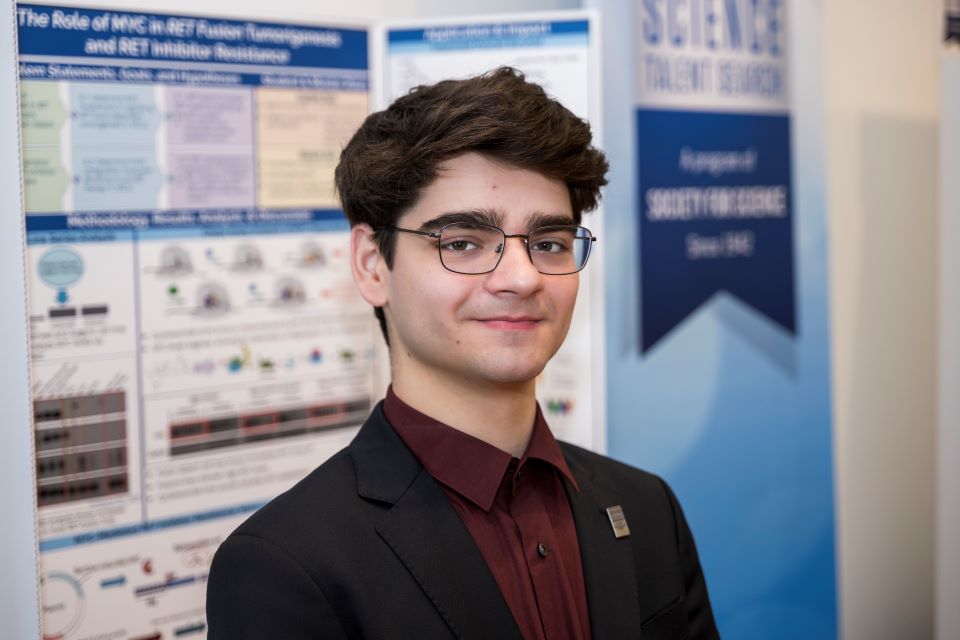
Christopher Zorn
Irvington High School (Irvington, New York)
Project title: The Role of MYC in RET Fusion Tumorigenesis and RET Inhibitor Resistance
Christopher investigated the relationship between RET, a gene involved in cellular signals, and MYC, a set of genes that regulate cell growth and death. His findings suggest paths for further drug research targeting both RET and MYC. What is Christopher most excited about so far from STS Finals Week? “I’m just going to keep learning. I like constantly learning new things. I wouldn’t say STS changed my trajectory, but it definitely reaffirmed it. I think it’s very satisfying to get my hard work acknowledged in this way. I mean, I didn’t think I would get top 300, much less top 40. To be able to come here, talk to all these other kids who I know feel very similar things to me, it really is just a great experience.”
This week, the 40 finalists are in Washington, D.C., competing for over $1.8 million in awards. Stay tuned for the announcement of the winners on March 12, 2024, and click here for the Virtual Public Exhibition of Projects, if you missed it in person.
Keen to follow their journey or aspire to be an STS finalist yourself? Sign up here for program updates and be on the lookout for the 2025 Regeneron Science Talent Search application, set to arrive on June 1, 2024.
